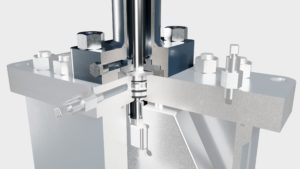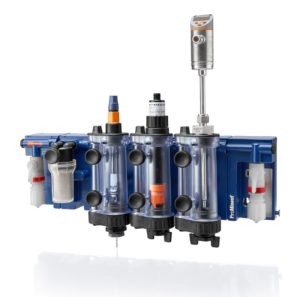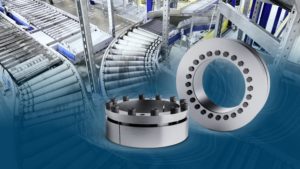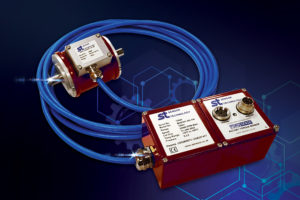Non-Contact Technology Simplifies Torque Monitoring and Aids Efficiency
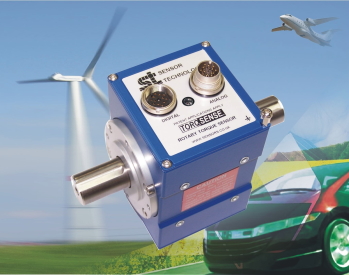
Non-contact technology simplifies torque monitoring and aids efficiency. (Image source: Sensor Technology Ltd)
An alternative solution is to use a non-contact radio frequency detector to monitor Surface Acoustic Waves (SAWs), as Mark Ingham of Sensor Technology Ltd explains.
Torque imparts a small degree of twist into a driven shaft, which will distort SAW devices (small quartz combs) affixed to the shaft. This deformation causes a change in the resonant frequency of the combs, which can be measured via a non-contact radio frequency (RF) pick-up mounted close to the shaft. The pick-up emits an RF signal towards the shaft which is reflected back by the combs with its frequency changed in proportion to the distortion of the combs.
Electronic processing and calibration of the returned signal generates a precise, real time indication of the torque being transmitted by the shaft.
A SAW transducer is able to sense torque in both directions, and provides fast mechanical and electrical responses. As the method is non-contact it has also offers complete freedom from slip rings, brushes and/or complex electronics, which are often found in traditional torque measurement systems. SAW devices also have a high immunity to magnetic forces allowing their use in, for example, motors where other analogue technologies are very susceptible to electronic interference.
In more detail...
In its simplest form, a SAW transducer consists of two interdigital arrays of thin metal electrodes deposited on a highly polished piezoelectric substrate such as quartz. The electrodes that comprise these arrays alternate polarities so that an RF signal of the proper frequency applied across them causes the surface of the crystal to expand and contract and this generates the surface wave.
These interdigital electrodes are generally spaced at half- or quarter-wavelength of the operating centre frequency. Since the surface wave or acoustic velocity is 10-5 of the speed of light, an acoustic wavelength is much smaller than its electromagnetic counterpart.
For example, a signal at 100Mhz with a free space wavelength of three metres would have a corresponding acoustic wavelength of about 30 microns. This results in the SAW s unique ability to incorporate an incredible amount of signal processing or delay in a very small volume. As a result of this relationship, physical limitations exist at higher frequencies when the electrodes become too narrow to fabricate with standard photolithographic techniques and at lower frequencies when the devices become impractically large. Hence, at this time, SAW devices are most typically used from 10Mhz to about 3Ghz.
Applications
SAW-based torque sensors have been used around the world and in many fields, from test rigs to wind turbines and generators based on tidal or river flows. They are used extensively in the high tech world of the development of engines and gearboxes for Formula 1. Pharmaceutical companies employ them to monitor the pumps micro-dosing active ingredients into medicines and tablets. Torque feedback systems can be used by security firms to determine the direction their movable CCTV cameras are facing so that they can efficiently watch premises under their protection.
Today, as industrial engineers automated manufacturing and processing operations they are increasingly turning to torque monitoring to generate the vital operating and production data that maintains production and efficiency
Source: Sensor Technology Ltd

